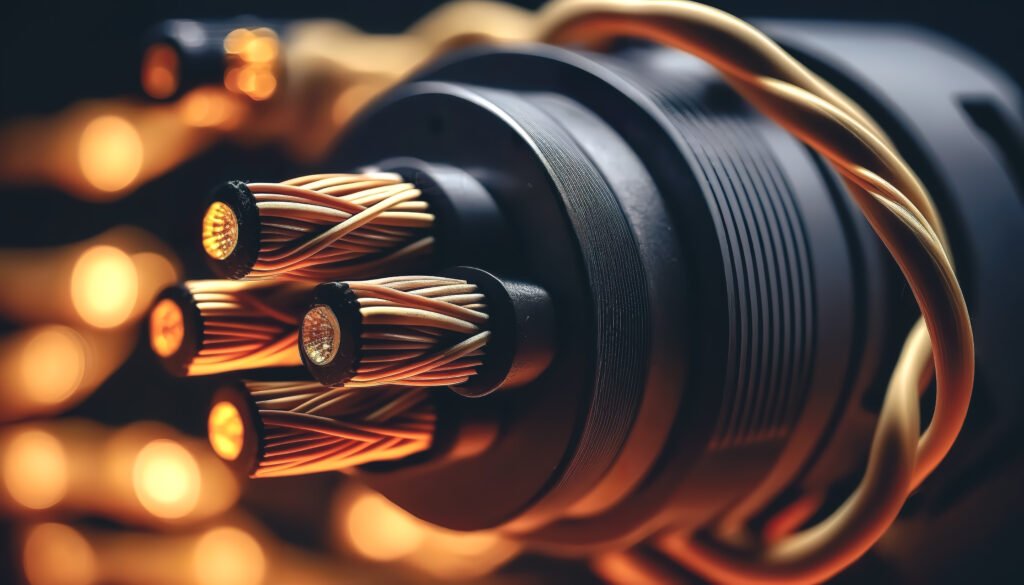Whether you’re revamping the wiring in your home, crafting handmade jewelry, or innovating in the field of renewable energy, knowing how to properly strip copper wire is a foundational skill. Doing it right can save you money, time, and effort in the long run. In this comprehensive guide, we will explore the different types of copper wire strippers, demystify the selection process, and walk you through the art of stripping with precision. Ready to strip away the complexities and bare the essentials? Read on for our ultimate copper wire stripper guide—for DIY enthusiasts, electricians, and innovative hobbyists alike.

The Significance of Stripping
Copper wire stripping is a fundamental task in many fields, including electrical work, craft projects, and recycling initiatives. Stripping wires involves the removal of the protective insulation to reveal the conductive copper underneath. The stripped wire can then be spliced, reconnected, or repurposed in various applications.
Proper wire stripping ensures that you maintain the integrity of the copper without damaging it. This is critical for electrical conduction and safety. Stripping efficiently also means less waste and more resources being repurposed, contributing to sustainability.

Understanding Your Tools: Types of Copper Wire Strippers
Copper wire strippers come in various forms, each with its own pros and cons
Manual Strippers
Manual copper wire strippers are the most basic type. They generally consist of a pair of handles that, when squeezed, hold the wire and pull the insulation off. This can be a slow and labor-intensive process, but manual strippers are often the most affordable and can handle a wide range of wire sizes.
Electric Strippers
Electric wire strippers are a step up in terms of automation. They’re powered by electricity and can strip wires more quickly than manual ones. They feature adjustable blades that allow you to strip different wire thicknesses with ease.
Thermal Strippers
Thermal wire strippers use heat to melt the insulation off the wire. These are especially useful for wires with tough or very thin insulation that may be difficult to remove with other types of strippers. They offer precise control but come with a higher price tag.
Laser Strippers
Laser wire strippers are the cutting-edge of stripping technology. They use lasers to heat the insulation and precisely strip it without damaging the wire underneath. These are typically used in high-volume, industrial settings and are not commonly found in the average hobbyist’s toolkit.
Choosing the Right Stripper for Your Needs

Selecting the best stripper for your project depends on several factors:
·Wire gauge:
The thickness of the wire you’re working with is a key consideration when picking a stripper. Some models are better suited for thicker or thinner wires.
·Stripping volume:
If you’re planning to strip a lot of wire, an electric or thermal stripper may be worth the investment for the time savings they provide.
·Budget:
Consider how much you’re willing to spend. While manual strippers are the least expensive, they also tend to be the slowest. You might find that an electric model strikes the right balance of cost and efficiency for your needs.

A Step-by-Step Guide to Copper Wire Stripping
Mastering the art of wire stripping is not about brute force; it’s about precision and technique. Here is a bit-by-bit breakdown of the cycle:
Preparation
1. Inspect your wire for any cuts or nicks. This could cause the wire to break during the stripping process, leading to unnecessary waste.
2. Determine the appropriate length of insulation to remove based on your project requirements.
Using the Stripper
·1. If you’re using a manual stripper, insert the wire into the cutting slot and close the handles to engage the blade.
·2. For an electric or thermal stripper, follow the manufacturer’s instructions for setting the blade or heat level and feeding the wire through.
Safety Tips
1. Always wear protective goggles to shield your eyes from stray wire strands and insulation debris.
2. Be mindful of the direction in which insulation is cut. Ensure it’s away from your body or face.
3. If using a thermal stripper, take care not to burn yourself on the hot wire or tool.
Reaping the Benefits of Efficient Stripping
Learning to strip efficiently yields several advantages for both your projects and the environment.
Increased Efficiency
An efficient stripping process means you can complete your projects faster. This is especially advantageous for those working on larger scales or with tight deadlines.
Cost-Effectiveness
By mastering the art of copper wire stripping, you’re also maximizing the value of your materials. Whether you’re recycling copper for profit or seeking to reduce expenses in your DIY or professional projects, removing insulation cleanly results in a higher purity of copper. This can translate to better resale value for scrap and more efficient use in electrical applications.
Environmentally Friendly
Stripping wire effectively also contributes to environmental conservation. By recovering and repurposing copper, we reduce the need to mine new resources, thus lessening the ecological impact. Proper disposal of the stripped insulation is equally important to ensure that materials do not end up in landfills unnecessarily.
In conclusion, investing the time to refine your wire-stripping skills and choose the right tools for your needs can result in significant benefits. You’ll save time and money, improve safety and quality of work, and act in a more environmentally conscious manner. With the guide provided, you’re now ready to tackle any copper wire stripping task with confidence and precision.

Cost Savings
Proper stripping reduces waste and allows for the reuse of more copper, which can be costly, especially in large quantities. Additionally, the use of faster stripping tools can save on labor costs for bigger projects.
Safety
The tools used for stripping are sharp and potentially hazardous if not used properly, particularly manual strippers. Efficiency in this context equates to doing the job effectively while minimizing the risk of cuts and other injuries associated with working with wires.

Conclusion: A Stripped-Down Recap
Proper wire stripping is a fundamental aspect of working with copper wire. It’s a skill that improves with practice and the right tools. By understanding the different types of copper wire strippers, knowing how to choose the right one, and learning the techniques for safe and efficient stripping, you can take your DIY and electrical projects to the next level.
For more detailed tutorials, consider seeking out instructional videos or classes to refine your stripping skills. Remember, practice makes perfect, and with every wire you strip, you’re not just gaining proficiency but contributing to a sustainable approach to resource use.
Armed with the knowledge from this guide, you’re ready to tackle your next copper wire stripping project. Always prioritize safety, invest in a quality stripper if the project warrants it, and enjoy the benefits of work done right.
FAQs
1. What is the primary purpose of a copper wire stripper?
A copper wire stripper is a tool designed to efficiently remove the insulation from copper wires, simplifying the process of recycling and preparing wires for various applications.
2. How do I use a copper wire stripper?
Using a copper wire stripper involves adjusting the tool to the appropriate wire size, placing the wire in the designated slot, and activating the stripping mechanism. Follow the manufacturer’s instructions for specific details about your tool.
3. Can I use a copper wire stripper for all types of wires?
Copper Wire Strippers are versatile and can be used for both solid and stranded copper wires commonly found in electrical, industrial, and communication applications.
4. How do I choose the right copper wire stripper for my needs?
Consider the wire gauge range, insulation type compatibility, and additional features such as adjustable settings. Evaluate the build quality and user-friendliness to ensure it meets your specific requirements.
5. Can a copper wire stripper handle different insulation materials?
Most copper wire strippers can handle common insulation materials like PVC, rubber, and thermoplastic. Refer to the tool’s specifications to confirm compatibility with specific insulation types.
6. Are copper wire strippers adjustable for different wire sizes?
Yes, copper wire strippers are generally adjustable to accommodate various wire sizes. Look for tools with settings or guides to ensure accurate stripping for different gauges.
7. Can I strip wires with irregular shapes or surfaces using a copper wire stripper?
Copper wire strippers are most effective on standard round wires. For irregular shapes or surfaces, manual stripping methods or specialized tools may be more suitable.
8. How do I maintain a copper wire stripper?
Regular maintenance is crucial. Keep blades clean, lubricate moving parts as recommended, and store the tool in a dry place. Periodically check for wear and tear and replace parts as needed.
9. Is it safe to use a copper wire stripper?
Follow the manufacturer’s safety guidelines and wear appropriate personal protective equipment, including gloves and safety glasses. Power off the tool when making adjustments or performing maintenance to prevent injuries.
10. Can a copper wire stripper be used for aluminum wires?
Copper wire strippers are designed specifically for copper wires. It is recommended to use a dedicated aluminum wire stripper for stripping aluminum wires effectively.